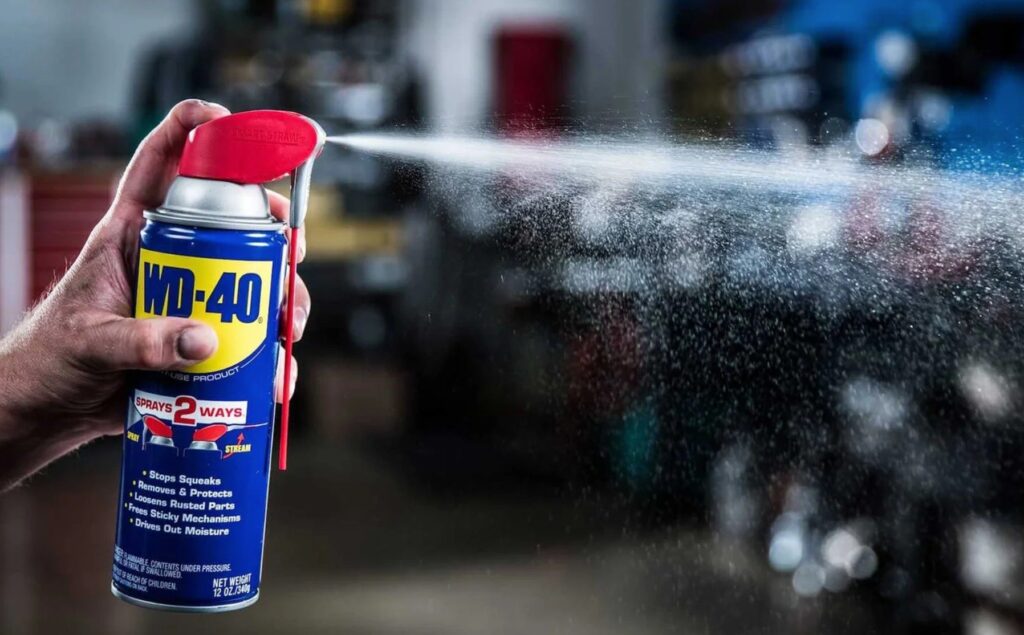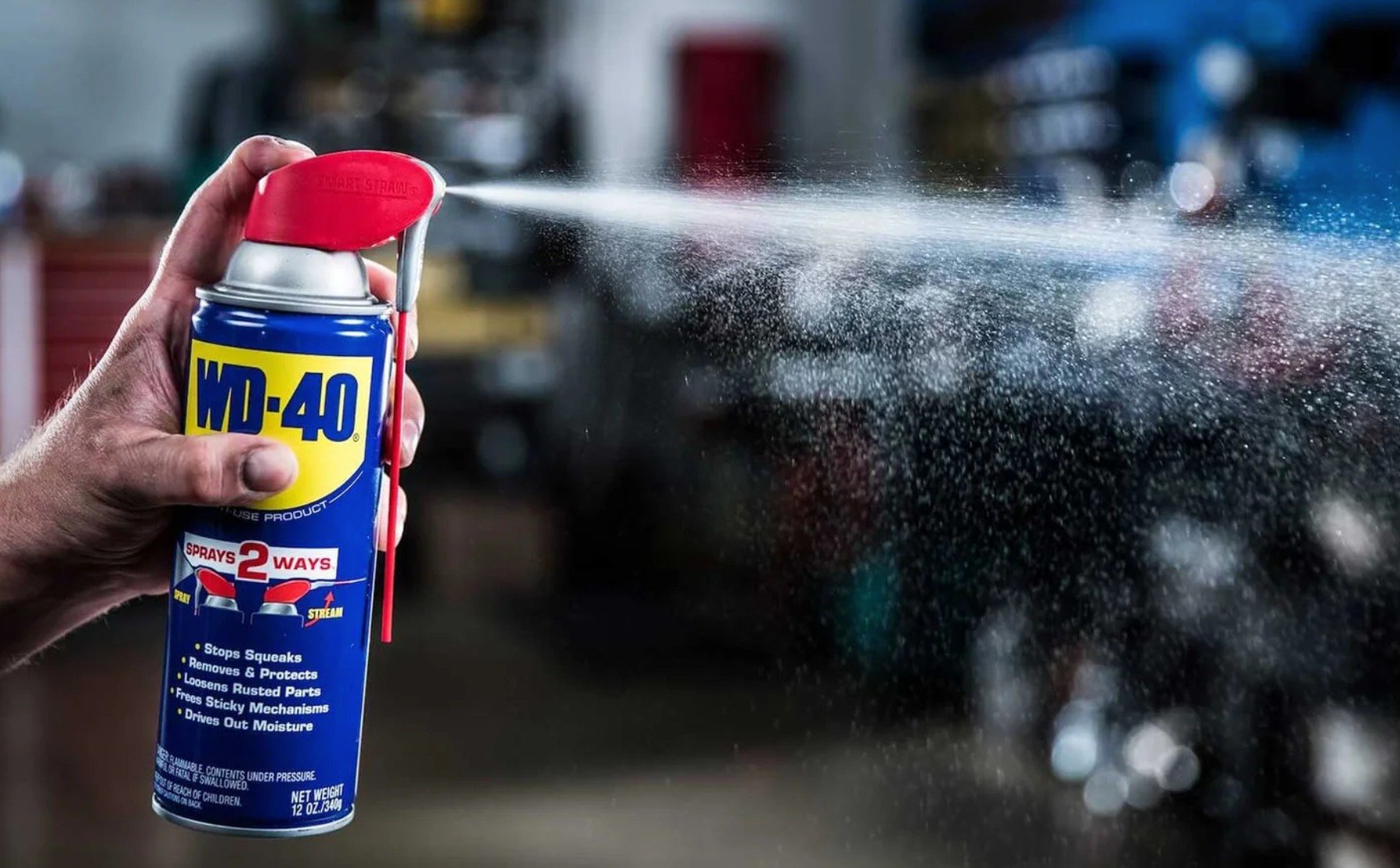
Unlocking the Mystery: What is the Main Ingredient in WD40?
WD40. The name itself is practically synonymous with multi-purpose lubricant. From silencing squeaky hinges to displacing moisture in electrical systems, this ubiquitous blue and yellow can is a staple in garages, workshops, and homes worldwide. But what exactly is WD40? What’s the magic behind its seemingly endless applications? While the exact formula remains a closely guarded trade secret, understanding the main ingredient in WD40, or rather, the primary components, provides valuable insight into its remarkable effectiveness.
This article will delve into the known constituents of WD40, exploring their individual roles and how they contribute to the product’s overall performance. We’ll examine the properties of these components, focusing on their lubricating, penetrating, and water-displacing abilities. Understanding the main ingredient in WD40 and its associated compounds helps appreciate the science behind this iconic product.
The Myth and Mystery of the WD40 Formula
The story of WD40 begins in 1953, with the Rocket Chemical Company (later renamed WD40 Company) in San Diego, California. The mission was to create a rust preventative and water displacement compound for the aerospace industry, specifically for Convair to protect the Atlas missile. The name, WD40, stands for “Water Displacement, 40th attempt,” reflecting the numerous formulations tested before the desired result was achieved. This origin story contributes to the mystique surrounding the product, further fueling curiosity about the main ingredient in WD40.
The exact formula remains a trade secret, never patented to avoid public disclosure. This decision has allowed the WD40 Company to maintain control over its intellectual property for decades. While the company provides a Safety Data Sheet (SDS) that lists some ingredients for safety and regulatory purposes, the precise ratios and specific chemical compounds remain confidential. This secrecy, however, hasn’t stopped researchers and enthusiasts from attempting to reverse engineer the formula, leading to various theories and speculations about the main ingredient in WD40.
Deconstructing the Composition: Key Components of WD40
Despite the secrecy, the SDS and other publicly available information offer clues about the key components of WD40. It’s crucial to remember that WD40 is a complex mixture, and its effectiveness stems from the synergistic interaction of multiple ingredients. Identifying the main ingredient in WD40 is therefore a bit nuanced, as several components play significant roles. However, we can categorize the primary constituents as follows:
- Mineral Oil: Often considered the main ingredient in WD40 due to its lubricating properties, mineral oil is a non-volatile petroleum derivative. It provides a protective layer, reducing friction and preventing rust. Its presence is crucial for WD40’s ability to loosen stuck parts and inhibit corrosion.
- Solvent: A solvent acts as a carrier for the other ingredients, allowing them to penetrate tight spaces and reach the intended target. The specific solvent used in WD40 is not explicitly stated, but it is likely a petroleum-based solvent with low viscosity.
- Propellant: The propellant is responsible for dispensing the product from the aerosol can. Historically, WD40 used chlorofluorocarbons (CFCs) as propellants, but these were phased out due to environmental concerns. Modern WD40 typically uses carbon dioxide (CO2) as a propellant.
- Inert Ingredients: This category encompasses a range of additives that enhance WD40’s performance, such as corrosion inhibitors, fragrances, and other proprietary chemicals. These ingredients, while present in smaller quantities, contribute to the product’s overall effectiveness.
The Role of Mineral Oil: Lubrication and Protection
As mentioned above, mineral oil is arguably the main ingredient in WD40 when considering its primary function: lubrication. Mineral oil’s viscosity allows it to create a thin film between moving parts, reducing friction and wear. This is particularly useful for loosening rusted bolts, freeing sticky mechanisms, and preventing squeaks. The oil also acts as a barrier against moisture, preventing corrosion and rust formation. The specific type of mineral oil used in WD40 is likely highly refined to ensure optimal performance and stability.
The Importance of the Solvent: Penetration and Cleaning
While mineral oil provides lubrication, the solvent is crucial for delivering it to the right places. The solvent’s low viscosity allows it to penetrate tight spaces, carrying the mineral oil and other active ingredients with it. This penetrating ability is essential for loosening rusted parts and dissolving grime and grease. The solvent also helps to clean surfaces, removing dirt and debris that can hinder lubrication. The solvent evaporates after application, leaving behind a thin film of mineral oil to provide lasting protection. Choosing the right solvent is crucial for the overall effectiveness of WD40; it needs to be effective at dissolving contaminants without damaging the treated surface.
Propellant: Delivering the Formula
The propellant’s role is straightforward: it pressurizes the can and forces the liquid formula out through the nozzle. While the propellant itself doesn’t contribute directly to WD40’s lubricating or protective properties, it’s essential for convenient application. The switch from CFCs to CO2 was a significant step towards environmental responsibility, demonstrating the WD40 Company’s commitment to sustainability. [See also: WD40 Environmental Impact]
Inert Ingredients: Enhancing Performance
The “inert ingredients” category is the most mysterious aspect of the WD40 formula. These additives are likely responsible for enhancing the product’s corrosion-inhibiting properties, improving its water displacement capabilities, and providing a pleasant scent. While the specific chemicals used are not disclosed, their presence contributes significantly to WD40’s overall effectiveness. These ingredients are likely carefully selected to work synergistically with the mineral oil and solvent, maximizing their individual benefits. The combination of these ingredients is what makes WD40 a superior product compared to basic mineral oil.
WD40: More Than Just a Lubricant
While often thought of primarily as a lubricant, WD40’s versatility extends far beyond that single function. Its water-displacing properties make it ideal for drying out wet electrical components, preventing short circuits and corrosion. It can also be used to remove adhesives, clean tools, and even polish surfaces. This multi-purpose functionality is a key reason for WD40’s widespread popularity. The ability to perform various tasks with a single can makes it a valuable asset in any home or workshop. Identifying the main ingredient in WD40 is only the first step to understanding its widespread applications.
Debunking WD40 Myths
Due to its widespread use and mysterious formula, several myths and misconceptions surround WD40. One common myth is that WD40 is a long-term lubricant. While it provides temporary lubrication, it’s not designed to withstand heavy loads or extreme temperatures. For such applications, specialized lubricants are more appropriate. Another misconception is that WD40 can damage certain materials, such as rubber or plastic. While prolonged exposure to WD40 can cause some materials to degrade, it’s generally safe for most common surfaces when used as directed. It’s always recommended to test WD40 on an inconspicuous area before applying it to a larger surface.
Alternative Lubricants and Their Uses
While WD40 is a versatile product, it’s not always the best choice for every application. For heavy-duty lubrication, grease or specialized oils are more suitable. For electrical contacts, contact cleaners are specifically designed to remove contaminants without damaging sensitive components. For rust prevention, dedicated rust inhibitors provide longer-lasting protection than WD40. Understanding the limitations of WD40 and exploring alternative solutions is crucial for achieving optimal results. [See also: Best Lubricants for Different Applications]
Conclusion: The Enduring Appeal of WD40
WD40’s enduring appeal lies in its versatility, effectiveness, and widespread availability. While the exact formula remains a secret, understanding the role of the main ingredient in WD40 – primarily mineral oil – and other key components provides valuable insight into its remarkable properties. From lubricating squeaky hinges to displacing moisture and preventing rust, WD40 has earned its place as a staple in homes, workshops, and industries worldwide. Its ability to perform multiple tasks with a single can makes it a convenient and cost-effective solution for a wide range of applications. The legend of WD40 continues to grow as people discover new and innovative uses for this iconic product. Next time you reach for that familiar blue and yellow can, remember the science behind the spray, and appreciate the ingenuity that went into creating this multi-purpose marvel. The main ingredient in WD40, along with the other components, work together to provide a solution for countless problems.

